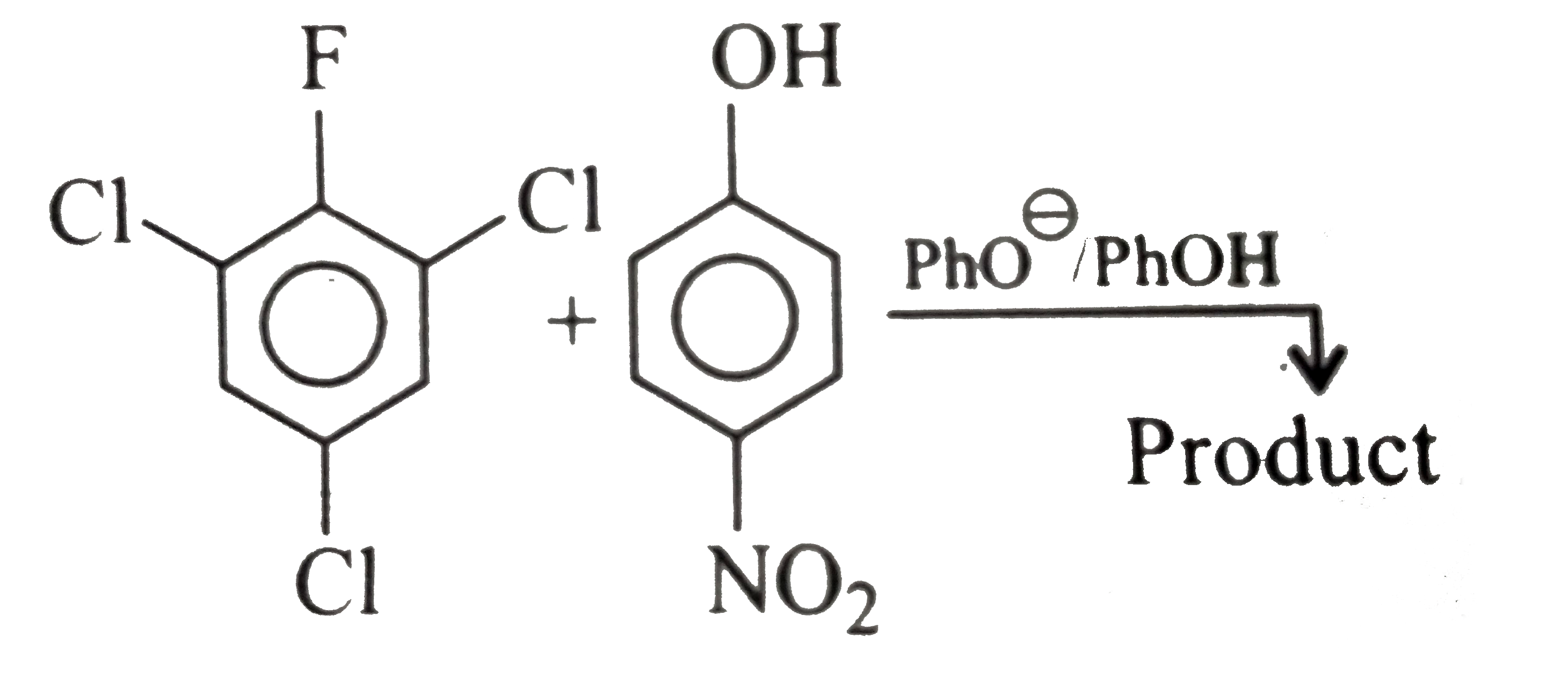Assertion (A): Pentan-2-one on reaction with NaHSO3 gives sodium bisulphite adduct product.
Reason (R ): (C=O) group of pentan-3-one is sterically hindered and nucleophile SO2−3 is also of large size, so nucleophilic addition reaction does not occur.
Both (A) and (R ) true and (R ) is the correct explanation of (A).
Both (A) and (R ) are true but (R ) is not correct explanation of (A).
(A) is true but (R ) is false.
(A) is false but (R ) is true.
The correct Answer is:D
To solve the given assertion and reason question, we need to analyze both statements carefully.
Step 1: Analyze the Assertion
The assertion states that pentan-2-one reacts with sodium bisulfite to give a sodium bisulfite adduct product.
Explanation:
Pentan-2-one is a ketone with the structure:
CH3|C=O|CH2−CH2−CH3
When a ketone reacts with sodium bisulfite (NaHSO3), the nucleophile (sulfite ion, SO3^2-) can attack the carbonyl carbon (C=O) to form a bisulfite adduct. This reaction typically occurs with ketones and aldehydes.
Step 2: Analyze the Reason
The reason states that the carbonyl group of pentan-3-one is sterically hindered, and the nucleophile SO3^2- is also of large size, preventing the nucleophilic addition reaction from occurring.
Explanation:
Pentan-3-one has the structure:
CH3|C=O|CH2−CH2−CH3
In this case, the carbonyl carbon is flanked by two ethyl groups, which create steric hindrance. The sulfite ion (SO3^2-) is indeed a relatively large nucleophile. The steric hindrance from the ethyl groups makes it difficult for the nucleophile to approach and attack the carbonyl carbon effectively.
Conclusion
- The assertion is incorrect because pentan-2-one (not pentan-3-one) can react with sodium bisulfite to form the adduct.
- The reason is correct because the steric hindrance from the ethyl groups in pentan-3-one does prevent the nucleophilic addition.
Final Answer
Thus, the correct answer to the question is:
- Assertion (A) is false.
- Reason (R) is true.
The correct option is D: Reason is correct, Assertion is wrong.
The assertion states that pentan-2-one reacts with sodium bisulfite to give a sodium bisulfite adduct product.
Pentan-2-one is a ketone with the structure:
CH3|C=O|CH2−CH2−CH3
When a ketone reacts with sodium bisulfite (NaHSO3), the nucleophile (sulfite ion, SO3^2-) can attack the carbonyl carbon (C=O) to form a bisulfite adduct. This reaction typically occurs with ketones and aldehydes.
The reason states that the carbonyl group of pentan-3-one is sterically hindered, and the nucleophile SO3^2- is also of large size, preventing the nucleophilic addition reaction from occurring.
Pentan-3-one has the structure:
CH3|C=O|CH2−CH2−CH3
In this case, the carbonyl carbon is flanked by two ethyl groups, which create steric hindrance. The sulfite ion (SO3^2-) is indeed a relatively large nucleophile. The steric hindrance from the ethyl groups makes it difficult for the nucleophile to approach and attack the carbonyl carbon effectively.
- The assertion is incorrect because pentan-2-one (not pentan-3-one) can react with sodium bisulfite to form the adduct.
- The reason is correct because the steric hindrance from the ethyl groups in pentan-3-one does prevent the nucleophilic addition.
Thus, the correct answer to the question is:
- Assertion (A) is false.
- Reason (R) is true.
Topper's Solved these Questions
- ALIPHATIC AND AROMATIC ALDEHYDES AND KETONESBOOK - CENGAGE CHEMISTRY ENGLISHCHAPTER - ALIPHATIC AND AROMATIC ALDEHYDES AND KETONESEXERCISE - Archives Objective
10 Videos
- ALIPHATIC AND AROMATIC ALDEHYDES AND KETONESBOOK - CENGAGE CHEMISTRY ENGLISHCHAPTER - ALIPHATIC AND AROMATIC ALDEHYDES AND KETONESEXERCISE - Archives Multiple Correct
8 Videos
- ALIPHATIC AND AROMATIC ALDEHYDES AND KETONESBOOK - CENGAGE CHEMISTRY ENGLISHCHAPTER - ALIPHATIC AND AROMATIC ALDEHYDES AND KETONESEXERCISE - Exercises Single Correct
71 Videos
- ALCOHOL,PHENOL AND ETHERSBOOK - CENGAGE CHEMISTRY ENGLISHCHAPTER - ALCOHOL,PHENOL AND ETHERSEXERCISE - Archives Analytical And Descriptive
15 Videos
- APPENDIX INORGANIC VOLUME 2BOOK - CENGAGE CHEMISTRY ENGLISHCHAPTER - APPENDIX INORGANIC VOLUME 2EXERCISE - Short Answer Type
179 Videos
Similar Questions
Assertion : trans −2−Butene on reaction with Br2 gives meso−2,3−dibromobutane.
Reason : The reaction involves syn−addition of bromine.
View SolutionAssertion (A): The following reaction occurs.

Reason (R ): The semicarbazone of (A) (pentan-2-one) exists in two geometrical isomers.
View SolutionAssertion : Pentan-2-one and pentan-3-one can be distinguished by iodoform test.
Reason : Only methylketines take part in iodoform reaction.
View SolutionAssertion (A): Reaction between (Me3CONa) (sodium ter-butoxide) and ethyliode (C2H5I) does not produce an ether.
Reason (R): Sodium ter-butoxide is a very strong base but is not a nucleophile.
View SolutionAssertion (A):

The product is:
Reason (R ): p−NO2−C6H4O− is a stronger nucleophile than PhO−.
View SolutionKCIO3 on reaction with SO2 gives (A) and on reactionwith conc. H2SO4 gives (B).(A) and (B) are
View SolutionAssertion (A): The reaction MeCOCI with MeCuLi or Me2Cd gives acetone but with MeMgBr a 3∘ alcohol (Me2C−OH)
Reason (R) MeMgBr is much more reactive. Me2CuLi or Me2Cd does not react by nucleophilic addition reaction.
View SolutionAssertion: Phenoxiede ion treatment with active alkyl halide (e.g., CH2=CH−CH2Cl) gives two products viz. O-substituted and C-substituted.
Reason: Phenoxide ion is an ambident nucleophile.
View SolutionAssertion (A) : C2H5Br and alcoholic silver nitrite react to give nitroethane as a major product.
Reason (R ) : NO−2 is an ambident nucleophile.
View SolutionAldehyde, ketone, acid and acid derivatives contain >C=O group. Aldehyde and ketones gives nucleop addition reactions where as acid and acid derivatives gives nucleophilic addition followed by ellmination reaction Nucleophilic addition reactions followed by ellimination of acid derivatives is known as acyl substitution reacts This subsitution reaction takes places by formation of tertrahedral intermediate.
Which one of the following is least reactive compound for nucleophilic acyl substitution.
View Solution
